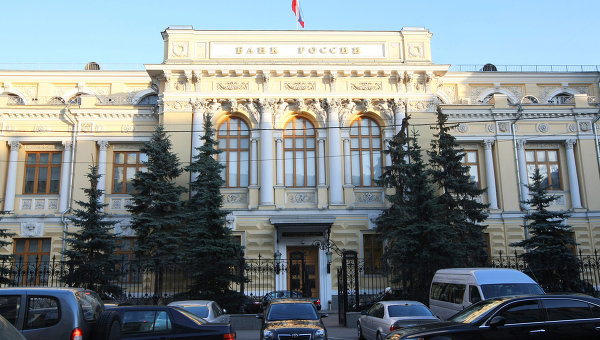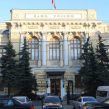
Russian Banks Face Dim Prospects as Ukraine Crisis Lingers
Publication: Eurasia Daily Monitor Volume: 11 Issue: 178
By:

With the diplomatic standoff between Russia and the West over Ukraine still far from reaching a resolution, and as Moscow continues to support the separatist movements in eastern Ukraine’s Donetsk and Luhansk provinces, the Russian economy keeps sliding into a recession. The International Monetary Fund (IMF) recently cut its growth forecast for Russia to 0.2 percent of its gross domestic product (GDP) in 2014, and not more than 0.5 percent next year. It had earlier said that the economy might expand by at least 1 percent in 2015, but the impact of Western sanctions had clearly made that level unattainable. Meanwhile, the World Bank estimates Russia’s 2014 growth potential at 0.5 percent while predicting weak economic results in 2015 and 2016—at 0.3 and 0.4 percent of GDP, respectively (polit.ru, October 2; segodnya.ua, October 1).
As Russia struggles to offset the sectoral sanctions imposed since July by the United States, the European Union, several other Western governments and Japan, an increasing number of foreign investors seem to be packing their bags. On October 2, the Russian Central Bank said that capital flight from the country might exceed $90 billion by the end of 2014. Some high-ranking officials previously even suggested figures between $100 billion and $120 billion. Last year, $62.7 billion worth of FDI left Russia, compared with $74.6 billion in this year’s first half alone. The trend looks all the more dismal if the $54.6 billion worth of capital outflow in 2012 is factored into the equation. This shows the stark contrast between the beginnings of Vladimir Putin’s third presidential term and the time when his more liberal predecessor, Dmitry Medvedev, made regaining the confidence of foreign investors his top priority (ITAR-TASS, October 2; rosbalt.ru, April 3).
The worsening macroeconomic situation in Russia is a serious cause for concern for the domestic banking sector, most of which has been living under the West’s sanctions regime for more than two months now. In July–August 2014, Russia’s five biggest banks were included on the sanctions list by the US, the EU, Canada and Switzerland. Western companies and individuals are thereby prohibited from buying, selling or offering any assistance with regard to transferable securities and money-market instruments with a maturity exceeding 90 days that were issued by these banks between August 1 and September 12, 2014. The same restrictions apply to their financial instruments with a maturity exceeding 30 days issued after September 12. Notably, the sanctioned banks in this category account for more than 50 percent of Russia’s entire banking sector (Interfax, September 18):
- Sberbank, Russia’s largest bank, with net assets worth over $453 billion, is controlled by the Central Bank, which holds 50 percent plus one share.
- The second-largest bank, VTB, is 60.9 percent owned by the state and operates net assets worth $161.2 billion. Its wholly-owned subsidiary, VTB 24, is ranked fourth in terms of net assets ($60.3 billion) and focuses on retail lending to small- and medium-sized enterprises (SME).
- Gazprombank, whose majority shareholder is the Russian gas giant Gazprom, ranks third and has $98.2 billion worth of net assets.
- The Bank of Moscow, Russia’s fourth-largest banking institution, is 96.4 percent controlled by VTB, with net assets worth $54 billion.
- The Russian Agricultural Bank ranks sixth ($48.2 billion worth of net assets) and is wholly owned by the state, just like Vnesheconombank which is a medium-sized government-operated development bank, under economic sanctions since late July.
Between March and August 2014, other smaller banks were also hit by the West’s restrictive measures. These include Bank Rossiya (15th in terms of size)—controlled by Putin’s close associate, the oligarch Yuri Kovalchuk, whose name appears on the individual sanctions list—and its subsidiary Sobinbank (97th); SMP Bank (34th) and Investcapitalbank (200th), owned by the brothers Arkady and Boris Rotenberg, both of whom are on the Forbes and sanctions lists and are Putin’s long-time friends; the Russian National Commercial Bank (162nd), which is now owned by the puppet government of Crimea; as well as two minor banks without particular ties to the Kremlin, Expobank (93rd) and Rosenergobank (132nd) (Interfax, September 18; finmarket.ru, August 1).
On September 19, the rating agency Standard & Poor’s issued a statement claiming that, in the medium run, the majority of sanctioned banks would be able to cope with the consequences of the Western sanctions—that is, until early 2016. In fact, big Russian banks have lately built up significant liquidity reserves to repay their debts to overseas bond holders while maintaining a scarce presence on foreign debt markets. Yet, all of them rely on foreign loans for complex and costly projects. And as long-term borrowing has become problematic, they sooner or later will face funding shortages. In late September, the government, however, promised to inject $6 billion into Vnesheconombank’s capital, of which $760 million may already be offered by the end of the year. A week later, President Putin promised further help to other sanctions-hit banks, despite the country’s flagging economy and its rising military and social expenses (polit.ru, October 2; gazeta.ru, September 25; Vedomosti, September 19).
While Sberbank has been performing rather well so far, posting for January–August 2014 a net profit only 0.5 percent lower than in 2013 year-on-year, several other leading banks have already shown signs of distress. Gazprombank’s net profit plummeted by 79 percent in the first half of 2014, after Gazprom’s own profits had fallen by 40 percent in January–March. VTB posted a net profit five times lower than in S1 2013, while its losses in Ukraine alone amounted to $650 million. In the same period, the Bank of Moscow’s net profit decreased by 7.5 percent year-on-year. The biggest challenge faced by banks is a potential loss of confidence on behalf of both retail and corporate clients, especially the latter ones, whose deposit base still grew year-on-year by 9 percent in January–August 2014 (ITAR-TASS, September 5; sberbank.ru, September 4; eprava.com.ua, August 29; top.rbc.ru, August 21).
Consequently, as the sanctioned banks are no longer capable of attracting long-term foreign loans and often have trouble processing payment requests via Western branches or correspondent banks, they risk massively losing domestic corporate clients, their primary source of funding for now.




